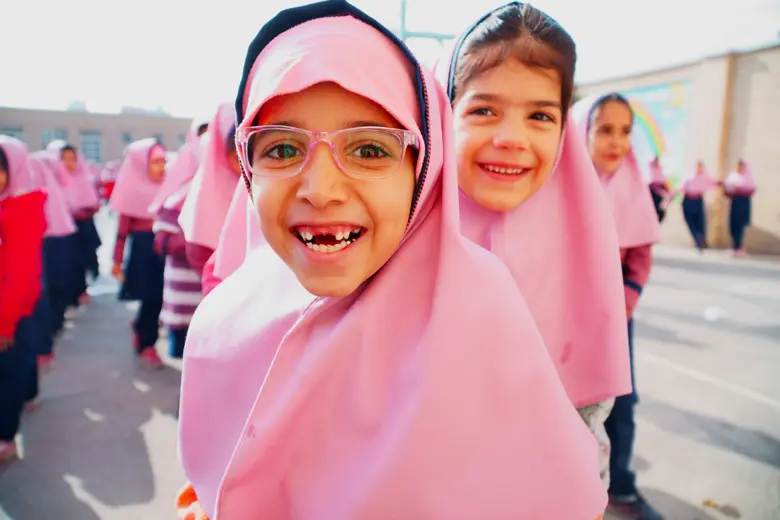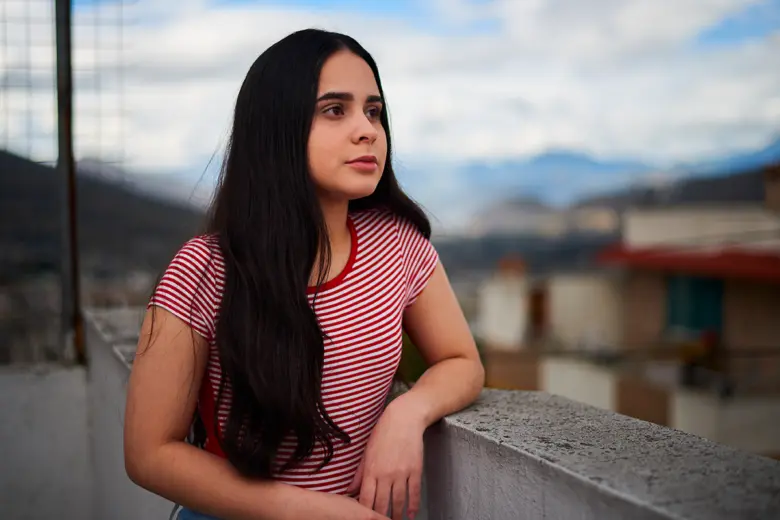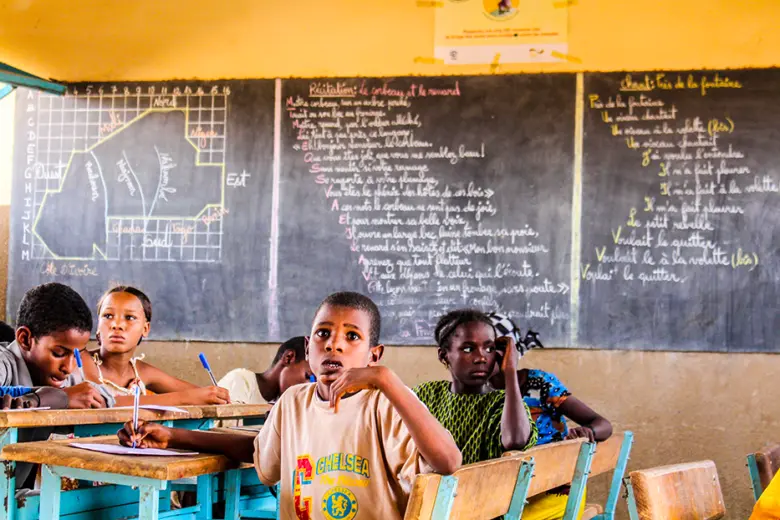
Teenage sisters, Parissa and Parimah, arrived in Iran with their family 10 years ago from Herat in Afghanistan. They are now enrolled at Vahdat Primary School – the first time they have been able to get a formal education. © UNHCR/Mohammad Hossein Dehghanian
OTTAWA, CANADA – In a report released today, titled ‘Coming Together for Refugee Education’, UNHCR, the UN Refugee Agency, predicts that unless immediate and bold action is taken by the international community to beat back the catastrophic effects of COVID-19 on refugee education, the potential of millions of young refugees living in some of the world’s most vulnerable communities will be further threatened.
While children in every country have struggled with the impact of COVID-19 on their education, the report finds that refugee children have been particularly disadvantaged. Before the pandemic, a refugee child was twice as likely to be out of school as a non-refugee child. This is set to worsen as many may not have opportunities to resume their studies due to school closures, difficulties affording fees, uniforms or books, or because they are being required to work to support their families.
“COVID-19 has been the biggest disrupter of education systems in history, affecting 1.6 billion learners globally”, said Rema Jamous Imseis, UNHCR’s Representative in Canada. “At a time when children in Canada have the opportunity to go back to school, adapting to the limitations imposed by COVID-19, half the world’s refugee children will not have that chance. Even once classrooms reopen, we fear that one out of two refugee girls may never return to school.”
The 2019 data shows that adapting to the limitations imposed by COVID-19 is especially tough for the 85% of the world’s refugees who live in developing or least developed countries, as they often lack access to necessary technologies or connectivity.

Back home in Venezuela, Emily attended the same school since the age of three and was always the best student in her class. When her family fled the spiralling crisis in Venezuela seeking safety Emily’s world was shattered. She’s now in her second year in Ecuador, where she has regained her spot at the top of the class and has been elected president of the student council. © UNHCR/Ramiro Aguilar Villamarín
For refugee girls, the threat is particularly grave
While there is 77% gross enrolment for refugee youth in primary school, only 31% of refugee youth are enrolled in secondary school. At the level of higher education, only 3% of refugee youth are enrolled.
Far behind global averages, these statistics nevertheless do represent progress. Enrolment in secondary education rose with tens of thousands of refugee children newly attending school – a 2% increase in 2019 alone. However, the COVID-19 pandemic now threatens to undo this and other crucial advances. For refugee girls, the threat is particularly grave.
Refugee girls already have less access to education than boys and are half as likely to be enrolled in school by the time they reach secondary level. Based on UNHCR data, the Malala Fund has estimated that as a result of COVID-19, half of all refugee girls in secondary school will not return when classrooms reopen this month. For countries where refugee girls’ gross secondary enrolment was already less than 10%, all girls are at risk of dropping out for good, a chilling prediction that would have an impact for generations to come.
“I am especially concerned with the impact on refugee girls,” said Filippo Grandi, UN High Commissioner for Refugees. “Not only is education a human right, but the protection and economic benefits to refugee girls, their families, and their communities of education are clear. The international community simply cannot afford to fail to provide them with the opportunities that come through education.”

Malian refugee children study at an UNHCR-supported primary school in one of the refugee camps in Burkina Faso. © UNHCR/Paul Absalon
A pandemic must not disrupt commitments to global education
UNHCR, governments and partners are working tirelessly to bridge critical gaps and ensure the continuity of refugee education during the pandemic.
In Burkina Faso, with support from Canada, UNHCR is providing identity documents so displaced kids can go to school, distributing school kits including radios, books and pencils, and offering alternatives to formal education such as radio programmes where lessons are broadcast over the airways.
The report highlights many other positive examples, including how governments have written into law the right of refugee children to attend state schools, with stories from Ecuador and Iran. Examples of digital innovation are highlighted by the Minister of Education in Egypt, and by a family in Jordan benefiting from the transition to online learning. With over half the world’s refugees living in urban settings, the importance of cities welcoming refugees is also emphasized.
However, at such a critical moment – especially for girls who face a possible point of no return in terms of education – much more is needed.
UNHCR is calling on governments, the private sector, civil society and others to join forces to find solutions for refugees which strengthen national education systems, provide other pathways for certified and quality education, and secure and safeguard financing for education.
“Inclusion of refugee and displaced students must be an integral part of the global response to COVID-19,” said Jamous Imseis. On Canada’s role, she added: “Canada is seen as a global leader on education and has made strong commitments to ensure that refugee and displaced children are not left behind – including leading an international campaign in this regard. A pandemic should not disrupt those plans, but rather stress how vital and urgent they are for the lives of millions of young refugees.”
About the report
‘Coming Together for Refugee Education’ is the fifth annual education report from UNHCR. The data in the report is based on the gross enrolment figures from the 2019 school cycle. The first, ‘Missing Out’, was released in 2016 in advance of the UN General Assembly’s Summit for Refugees and Migrants in September 2016. It called for donors to provide multi-year and predictable funding for refugee education. The second, ‘Left Behind’, was released in 2017 called for education to be considered fundamental to the response to refugee emergencies. The third, ‘Turn the Tide’, was released in 2018 and highlighted that four million refugee children did not attend school. The fourth, ‘Stepping Up: Refugee Education in Crisis’, highlighted a huge drop off between secondary and tertiary education.
This year’s report includes a preface by Filippo Grandi, UN High Commissioner for Refugees, and a Final Word by footballer Mohamed Salah, who this year became the first Ambassador for Instant Network Schools, set up in 2013 by the Vodafone Foundation and UNHCR to connect refugee and host-country students to a quality digital education.
For more information and interview requests:
In Ottawa, Emmanuelle Paciullo, Tel. +1 (514) 772-4435, paciullo@unhcr.org
Additional information for broadcasters, news organizations and other media professionals
A full multimedia content package, the full report, and contact details for UNHCR’s country and global spokespersons can be found on the media page.


